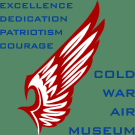As we get older, we continue to find that life is a series of learning experiences. Because of the recent rains, the gear quickly bogged down in the soft ground beside the ramp. With the co-operation of the airport management, who NOTAM'd the taxiway out of service, we called our friendly crane company who happened to have the needed equipment just down the road. These guys have assisted in the past with rigging and lifting, especially when we have off loaded the aircraft on arrival (see the Mi-24 coming out of the box and the Mig-23 coming out of the box).
With a quick lift, we were soon back in the hangar, although some of the "boys" were covered in good Texas mud (and a bit of chagrin). And while the taxiway was temporarily closed, the local police department took the opportunity to come out and practice using "Stop Sticks". With the locals checking the moorings on their Arks the day before and the day after, we picked a good day for everyone to get outside and enjoy the Texas weather.

When we took a poll of associates about publishing a potentially embarassing story, the response overwhelmingly was positive, after all that's what blogs are for, and look what we've accomplished, we've assisted local law enforcement and provided a stimulus package for the local economy through fuels sales and crane rental. Or, as another associate summarized:
Fuel Purchase ----------------- $xxx.xx
Crane Rental ------------------ $xxx.xx
Getting Stuck in the Mud ---- Priceless!
We will have videos of the happier and drier portions of this exercise posted soon and with the skies once again blue and clear, we hope to have more stories to tell and video to post after the weekend.
































